

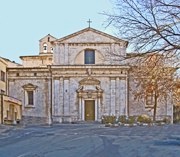
The origin of this church goes back to 1538, when a certain Jacopo Spinelli constructed a small chapel here in the form of the Holy House of Loreto. He commissioned a fresco (1538) for the chapel that depicted the Madonna and Child with saints (see below). This became an object of veneration because it was believed to have been completed by an angel. This veneration increased in 1571, when the image was credited with having protected Spoleto from a series of earthquakes that shook the surrounding area.
Bishop Fulvio Orsini commissioned the Florentine Annibale de' Lippi to design a larger church to accommodate the image, and he laid its foundation stone in 1572. The team of stone masons who worked on the project, who mostly came from Lombardy, also included Francesco Casella da Carona.
A number of noble families of Spoleto subsequently contributed to the cost a portico along Via Madonna di Loreto (see Walk IV) that provided a covered processional route from the city.
Work on the church itself proceeded slowly and was still incomplete in 1604, when a community of Barnabites established the adjacent Collegio della Madonna di Loreto. Bishop Lorenzo Castrucci finally consecrated the church in 1621. The inscription on the left on the inner side of Porta San Matteo records that the papal governor, Cardinal Giambattista Rubini restored Via Madonna di Loreto, the processional route to the church, in 1673.
The complex was suppressed in 1798 and the Augustinian friars from San Nicolò acquired it in 1803. They brought the relics of the Blessed Christina Semenzi with them. The complex was suppressed again in 1860, when the church was used as a barracks. The relics of the Blessed Christina Semenzi were moved to San Gregorio Maggiore in 1921.
The complex passed to the Capuchin Fathers in 1925.
-
✴The college (see below) was demolished in 1936 to make way for the new hospital.
-
✴The church, which had briefly re-opened for worship, was further damaged in 1944 when it was once more put to military use.
The church has recently been restored, and re-opened for worship in 2004.
Exterior
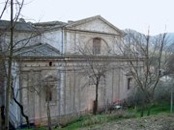
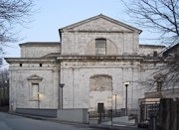
Right side Back
The basic floor plan of the church is in the form of a Greek cross, with chapels at all four intersections. The construction was never completed: neither the side portals nor the cupola that formed part of the original plan were ever built. The portal in the ack wall was closed at some point.
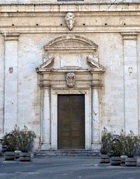
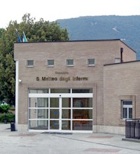
-
✴The friars from San Nicolò (see above) used it as their convent from 1803 until 1860.
-
✴It then housed an agrarian institute.
-
✴It was demolished in 1936 and a new hospital was built on the site in 1939 to replace the Ospedale di SS Carlo e Matteo (see San Matteo).
Interior

The floor plan of the church is in the form of a Greek cross: four identical rectangular spaces surround the central area, which was planned to be covered by a cupola. An interior wall defines a semi-circular ape in the spac opposite the entrance.
Cappella "Spinelli" (1701)
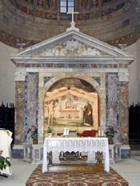
Madonna and Child with saints (1537)
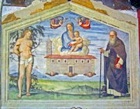
Art from the Church
Panels (1609)
The Campello family commissioned three panels from Giovanni Baglione for their new chapel (to the right of the entrance). These panels, which are in the deposit of the Commune, depict:
-
✴the Visitation;
-
✴the Nativity (which is signed and dated by inscription); and
-
✴the Adoration of the Magi.

